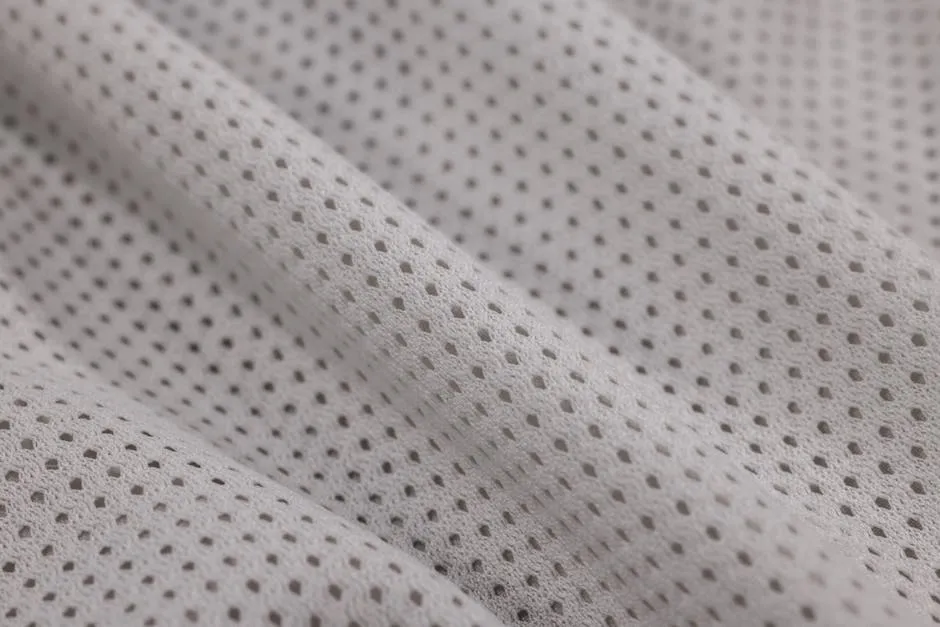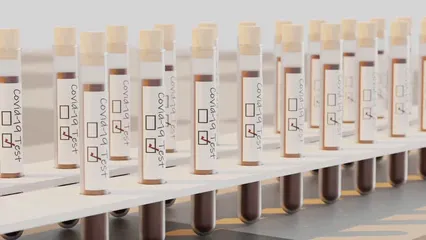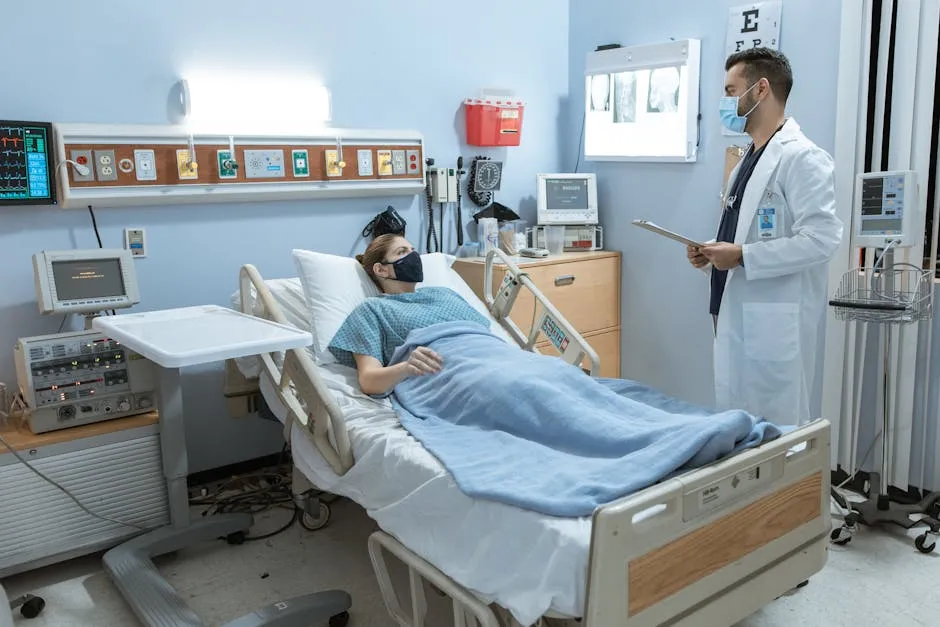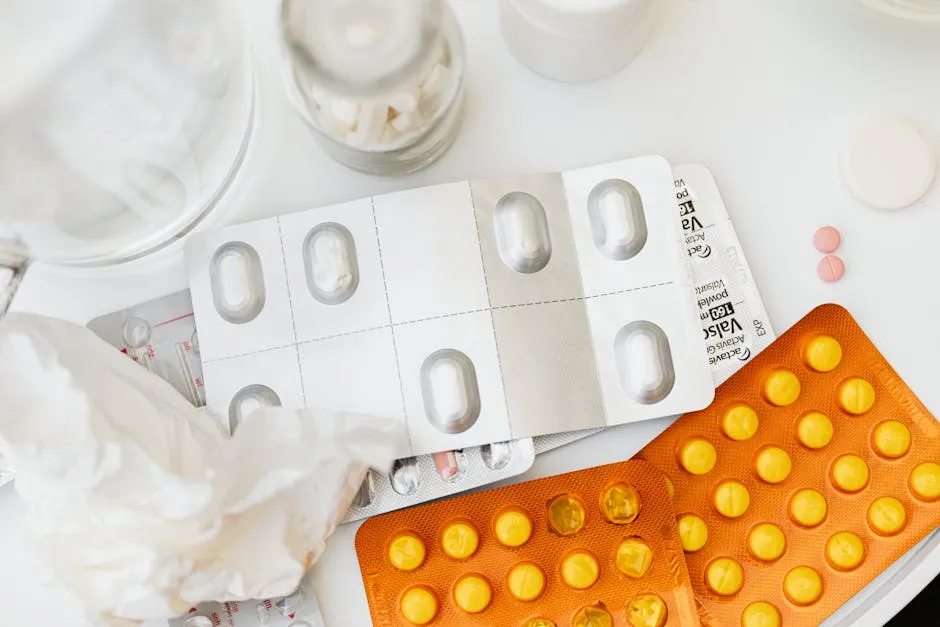
Why Do I Sweat So Much? Understanding Excessive Sweating
Introduction
Sweating is a perfectly normal bodily function. It helps regulate your temperature and keeps you cool. However, for some, sweating isn’t just a casual response; it can feel like a full-time job! If you often find yourself asking, “Why do I sweat so much?” you might be dealing with excessive sweating, also known as hyperhidrosis. This condition can turn everyday activities into mini-dramas, leaving you feeling embarrassed and uncomfortable.
Did you know that approximately 2-5% of the population is affected by hyperhidrosis? That’s about 10 million people in the U.S. alone! Imagine being in a crowded elevator, and suddenly, your armpits decide to host a water park party. Not fun, right? Sweating that occurs without a clear trigger can lead to social anxiety and make you feel like a human sprinkler system.
This article will break down the causes of excessive sweating, its symptoms, and explore various treatments and coping strategies. So, sit back, grab a towel (just in case), and let’s get to the bottom of why you might be sweating through your favorite shirt.

Summary of Key Points
In this article, we’ll cover everything you need to know about hyperhidrosis. First, we’ll define the condition and distinguish between two main types: primary and secondary hyperhidrosis. Understanding these differences can help identify the underlying issues contributing to your sweating.
Next, we’ll discuss common causes, including genetic factors and medical conditions. We’ll also highlight symptoms to watch for, such as excessive moisture in specific areas like armpits, hands, and feet. Spoiler alert: if your hands are always clammy, you might want to read on!
Then, we’ll introduce various treatment options. From lifestyle changes, like wearing breathable fabrics, to medical interventions, such as prescription antiperspirants and Botox injections, there’s hope on the horizon. Speaking of breathable fabrics, why not check out some breathable cotton clothing? They’re a game changer for keeping cool!
Lastly, we’ll touch on the emotional and social implications of living with hyperhidrosis. It’s not just about the sweat; it’s about how it affects your life. By the end of this article, you’ll have a comprehensive understanding of excessive sweating and how to manage it effectively. So, let’s dive in and tackle this sweaty situation!

Understanding Sweating
What is Sweating?
Sweating, or perspiration, is a natural process that helps maintain your body temperature. When your internal temperature rises, your body activates sweat glands to release moisture. There are two types of glands responsible for this: eccrine and apocrine glands. Eccrine glands cover most of your body and respond to heat and stress, while apocrine glands are mainly found in areas with hair follicles, like your armpits, and are activated by emotional triggers.
Normal triggers for sweating include hot weather, vigorous exercise, and emotional responses like anxiety or excitement. Think of it this way: when you’re sweating, your body is working hard to keep you cool and comfortable. But for some people, this system is on overdrive, leading to excessive sweating, even in cool conditions or at rest.
Understanding how sweating works is crucial in identifying why some people sweat more than others. In the next sections, we’ll uncover the fascinating world of hyperhidrosis, its causes, symptoms, and the many ways to tackle it head-on.

What is Hyperhidrosis?
Hyperhidrosis is more than just an unfortunate sweating situation; it’s a medical condition that leads to excessive perspiration. This can happen even when it’s not hot, or during moments of calm and relaxation. Imagine sitting in a meeting, trying to focus, while your underarms are hosting a mini-waterfall. Not exactly ideal, is it?
There are two main types of hyperhidrosis. Primary focal hyperhidrosis is usually inherited and affects specific areas like the armpits, palms, and feet. This type kicks off during childhood or adolescence and can run in families. On the flip side, secondary generalized hyperhidrosis is tied to other medical conditions or medications that can lead to sweating all over the body.
This condition is more common than you might think. Studies suggest that about 2-5% of the population suffers from hyperhidrosis. In the U.S. alone, that’s millions of people feeling the sweat! It’s not just a personal nuisance; it can significantly impact daily life, leading to discomfort, self-consciousness, and even social avoidance.

Symptoms of Hyperhidrosis
So, how do you know if you’re dealing with hyperhidrosis? The symptoms are pretty straightforward. The most common areas affected are the armpits, hands, feet, and even the face. Sweating can be so significant that it leads to visible droplets or soaked clothing. You might find yourself in the embarrassing position of needing to change your shirt multiple times a day.
But it’s not just about the sweat. The psychological effects can be profound. Many individuals struggle with feelings of anxiety and embarrassment. Social situations might turn into a no-go zone, as the fear of sweating in public can lead to avoidance. Imagine missing out on that fun summer barbecue because you’re worried about how you’ll look when the sun hits. It’s a tough spot to be in!
If you find yourself constantly reaching for a towel or feeling anxious about your sweat levels, it may be time to explore the world of hyperhidrosis further. Let’s uncover what causes this condition next!

Diagnosis of Hyperhidrosis
Hyperhidrosis is diagnosed through a combination of patient history, physical examinations, and specific tests. Medical professionals first conduct a thorough evaluation of the patient’s sweating patterns. They ask questions about when and where excessive sweating occurs, its frequency, and any triggers, like stress or heat. This initial inquiry helps to rule out other potential causes.
The process of elimination is crucial. Many people sweat excessively due to conditions like diabetes, hyperthyroidism, or infections. Therefore, doctors often perform tests to identify or rule out these underlying conditions. Blood tests may check for hormonal imbalances, and imaging tests can help spot tumors or other abnormalities.
Two common tests used to diagnose hyperhidrosis are the starch-iodine test and the paper test. The starch-iodine test involves applying an iodine solution to the affected areas. Once dried, a starch powder is sprinkled over the skin. Where excessive sweat is present, the mixture turns dark blue, highlighting the areas of concern. It’s like a magic trick, but instead of pulling a rabbit out of a hat, you’re revealing your sweat zones!
The paper test measures the amount of sweat produced in a specific time frame. Medical professionals use special absorbent paper that’s placed on the sweating area. After a set time, they weigh the paper to quantify how much sweat it has absorbed. This helps to provide a clear picture of the severity of the condition.
By gathering this information and conducting these tests, healthcare providers can accurately assess whether a patient has hyperhidrosis and determine the best course of action for treatment.

Treatment Options for Excessive Sweating
At-Home Remedies
Managing excessive sweating can often start at home with simple lifestyle changes. One of the most effective methods is using clinical-strength antiperspirants. These are not your average deodorants; they contain higher concentrations of aluminum chloride, which blocks sweat glands more effectively. Apply these at night when sweat production is lower for better absorption.
Clothing choices play a significant role too. Opt for loose-fitting garments made from breathable fabrics like cotton. They allow air circulation and help wick moisture away from the skin. Avoid synthetic materials that trap heat and moisture, transforming you into a sweaty mess. And speaking of personal hygiene, regular bathing is essential. Keeping your skin clean and dry helps prevent sweat from accumulating and causing skin irritation or odor.
Another tip? Stay hydrated! Drinking plenty of water can help regulate your body temperature. Your body will be less likely to overreact when it’s well-hydrated. So, keep that water bottle close!

Medical Treatments
If at-home remedies don’t cut it, medical treatments may be necessary. Anticholinergic medications are often prescribed to manage excessive sweating. These work by blocking the chemical signals that stimulate sweat glands. They can be effective but may come with side effects, such as dry mouth or blurred vision.
Botulinum toxin injections, commonly known as Botox, have also proven effective for hyperhidrosis. They temporarily block the nerves responsible for sweating. Treatments can last several months, giving you a break from the dripping dilemma. Just think of it as a mini-vacation from sweat!
For those dealing with more severe cases, iontophoresis devices can be a game-changer. This procedure involves passing a mild electrical current through water and into the skin’s surface. It temporarily disables sweat glands, especially in hands and feet. It might sound a bit sci-fi, but many patients report significant relief.
Lastly, if other treatments fail, surgical options exist. Endoscopic thoracic sympathectomy (ETS) involves cutting nerves that trigger sweating. While it can be effective, surgery should be a last resort due to potential risks and side effects.
Navigating the world of excessive sweating can be challenging, but don’t fret! Solutions are available, ranging from simple lifestyle adjustments to advanced medical interventions. With the right approach, you can reduce the impact of hyperhidrosis on your daily life.

Living with Hyperhidrosis
Emotional and Social Considerations
Living with hyperhidrosis can feel like an ongoing episode of a reality show—one where the focus is on your sweat. Those affected often grapple with feelings of embarrassment and anxiety in social situations. Imagine attending a job interview while your palms are slicker than a slip-and-slide! It’s tough.
The emotional toll is real. Many individuals avoid social gatherings, fearing judgment or awkwardness. You might feel like a sweaty pariah at events where you should feel relaxed. This can lead to isolation, making it essential to seek support.
Finding coping strategies is key. Therapy can be a game changer. Speaking to a counselor can help you navigate those emotional hurdles. Support groups are also invaluable; connecting with others who share similar experiences can alleviate feelings of loneliness. Sharing stories over a cold drink (with sweat-free palms) fosters community.
Consider these tips:
- Talk about it: Open up to friends or family. You may be surprised at their understanding.
- Seek professional help: A therapist can provide strategies for dealing with anxiety.
- Join support groups: Connecting with others can be incredibly reassuring.
Not every day has to be a sweaty saga! With the right tools and support, you can tackle the emotional rollercoaster of hyperhidrosis and regain your confidence.

When to Seek Medical Help
Knowing when to consult a healthcare professional can feel daunting. However, recognizing the signs your sweating is affecting your quality of life is crucial. If you find that excessive sweating interrupts your daily routine, it’s time to take action.
Consider these indicators:
- Frequency: If you’re sweating at least once a week, it may be time for a chat with your doctor.
- Discomfort: If your sweating leads to rashes or skin infections, seeking help is wise.
- Emotional distress: If you feel anxious or depressed because of your sweating, don’t hesitate to reach out for support.
Discussing your symptoms openly with your doctor is essential. They can perform a thorough evaluation and help identify any underlying conditions that may be contributing to your sweating. Remember, you’re not alone in this journey. Many treatment options are available, and addressing the issue can improve your overall well-being.
Taking that first step to seek help can open the door to a more comfortable, confident you. Don’t let excessive sweating dictate your life’s narrative!

Conclusion
In conclusion, hyperhidrosis is a common condition affecting many people. It’s not just an inconvenience; it can significantly impact daily life and emotional well-being. Remember, you’re part of a larger group—2-5% of the population—navigating similar challenges.
Treatment options are available, from lifestyle changes to medical interventions. Clinical-strength antiperspirants, medications, and even Botox are on the table. Don’t shy away from discussing your symptoms with a healthcare professional. They can help you find the right approach to manage your sweating effectively.
Taking proactive steps towards managing your condition is crucial. Embrace the journey to discover what works best for you. For those hot summer days, a cooling towel can be a lifesaver! Remember, you don’t have to suffer in silence. With the right support and treatment, you can regain control over your life and live comfortably, sweat-free!

FAQs
What is hyperhidrosis?
Hyperhidrosis is a condition where the body sweats excessively, even when it’s not hot or during physical activity. This can lead to unwanted moisture on the skin and clothing. There are two main types: primary and secondary. Primary hyperhidrosis generally affects specific areas like the hands, feet, and armpits, often with no identifiable cause. Secondary hyperhidrosis occurs due to underlying medical conditions or medications and can affect the entire body.
Is excessive sweating harmful?
While excessive sweating isn’t typically harmful in itself, it can lead to social anxiety and embarrassment. Moreover, the moisture can cause skin irritation and infections. If excessive sweating starts to interfere with your daily life or emotional well-being, it’s important to seek medical advice. Your doctor can help determine if there’s an underlying issue that needs addressing.
Can I manage sweating through lifestyle changes?
Absolutely! Making a few lifestyle adjustments can significantly help manage excessive sweating. Staying cool, wearing breathable fabrics, and avoiding spicy foods or caffeine can make a difference. Incorporating clinical-strength antiperspirants into your routine can also be effective. Remember, keeping the affected areas clean and dry is key!
What should I do if I experience sudden excessive sweating?
If you notice a sudden increase in sweating, especially if it’s accompanied by other unexplained symptoms like chest pain, dizziness, or fever, it’s time to consult a healthcare professional. They can assess your symptoms, conduct necessary tests, and rule out any serious underlying conditions.
Are there any home remedies that work?
Home remedies can be quite helpful! Some popular options include applying cornstarch or baking soda to absorb moisture, using witch hazel as a natural astringent, and maintaining good hygiene. Staying hydrated can also help regulate body temperature. However, if sweating persists, consulting a healthcare provider is recommended for more effective treatment options.
Please let us know what you think about our content by leaving a comment down below!
Thank you for reading till here 🙂
Understanding effective coping strategies can greatly help individuals manage their anxiety related to excessive sweating.
All images from Pexels




